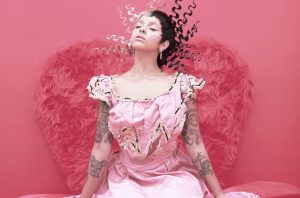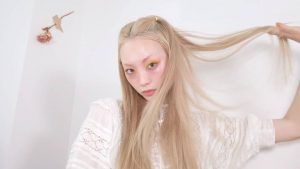The Goth aesthetic has always been associated with outsiders, those living in the fringes. It is raw, intimidating, but also highlights the beauty in the things most people would turn away from. If you’re among those who have always thought that being Goth is nothing more than a mere fashion statement, think again. You might be surprised at how much depth and history it carries.
The Goths and the Visigoths
Before Gothic fashion, there were the Goths and the Visigoths.
The Goths were a Germanic people, nomads, who fought back against the rise of Roman rule during the early 400s A.D. Known to be among the most powerful factions during this period, their tribes were split into two: the Visigoths and the Ostrogoths. Keep this little tidbit in mind for Halloween trivia night!
Just how powerful were they? Well, they were able to help topple the Roman Empire, which had most of Europe under its control for centuries. This victory is said to have also marked the end of the Classical period and the beginning of the Dark Ages. From Rome’s ruins, new art styles arose, which emphasized allegory and religious symbolism.
The Gothic Aesthetic in Architecture
As with any new art movements, it influenced many aspects of life. This includes architecture, introducing designs such as pointed arches and large windows, which gave buildings a more skeletal appearance. The style was copied throughout Europe, though quickly fell out of fashion as people looked toward Ancient Greece and Rome for inspiration.
It was Giorgio Vasari who coined the term Gothic Architecture to describe these out-of-fashion buildings. The name is a derogatory term, meant to describe the Gothic tribes that overthrew the Roman Empire as being Barbaric. Needless to say, even back then, being “Gothic” was seen as wrong or out of the norm.
The Gothic Aesthetic in Literature
Past the Dark Ages, civilization moved into what is known as a period of Enlightenment. During the 1700s, society saw it fashionable to value Scientific reason above all else. Where the Dark Ages reveled in symbolism and superstition, this new era sought to dispel all such beliefs. Not everyone was onboard, however, including authors such as Lord Byron who saw much beauty in the mysterious and the spiritual.
We find the use of the word Gothic once more during this period, but it is now being used to refer to a darker form of romanticism in the literature. Different elements of Gothic literature were then adapted by Gothic horror pioneers Edgar Allen Poe, Bram Stoker, and Mary Shelley into their works. They created many of the classics we associate with the genre today, which also formed the foundation for Gothic music to arise.
Some of the foremost examples of classic Gothic literature include:
- Dracula by Bram Stoker
- Frankenstein by Mary Shelley
- The Picture of Dorian Gray by Oscar Wilde
- Camilla by J. Sheridan LeFanu
Modern Goth style authors include:
- Interview With The Vampire by Anne Rice
- The Sound and the Fury by William Faulkner
Though each may be centuries or decades apart, one common thread ties all of these books together: their themes of the unsettling, the macabre, and the supernatural.
The Gothic Aesthetic in Music
This brings us to how most of us were introduced to the Goth subculture: music. The earliest Gothic rock musicians took inspiration from literature, taking its themes of darkness and loneliness, then applied it to their lyrics. Many credit Siouxsie Sioux, an English singer-songwriter, as one of the pioneers of the genre. She was the first Gothic girl, so to speak. Not only did she help create the sound we know today, she also greatly influenced Gothic fashion and the Gothic makeup style.
She formed the band Siouxsie and the Banshees in 1977, introducing audiences to their powerful yet entrancing music. Their first successful single, “Hong Kong Garden”, featured oriental guitar stylings paired with lyrics and vocals that express anger and isolation. These would later become one of the most enduring elements of Goth music, as well as other sub-genres such as ethereal wave, gothic rock, post-punk, and cold wave, to mention a few.
The 1980s saw more bands from the Gothic music genre achieve mainstream success. Among the most notable are:
- Siouxsie and the Banshees
- The Cure
- Bauhaus
- Joy Division
Different Types of Goth Subculture
Most people have one very narrow idea of what Goth looks like. This is likely the fashion popular during the Victorian, Belle Époque, and Edwardian eras. The contemporary version is really no different; only grittier and with the addition of dark make-up, fishnets, gun-metal accessories, and heavy boots.
However, there are actually many different types of Goths. The subcultures are as diverse as the people who appreciate the art form and have given it their own spin. Goth no longer means you only have to wear black. It doesn’t always mean loneliness or anger, either.
Allow us to introduce you to the different variations on the Goth aesthetic.
Pastel Goth Aesthetic
The Pastel Goth aesthetic originated from Tumblr and was first seen in 2010. It takes the macabre elements of the darker, more traditional Gothic style and mixes it with pastel colors. It is also influenced by Harajuku street fashion, such as the Lolita style. This style has also influenced those who also follow the Egirl Aesthetic, though the Pastel Goth don’t always fall under the Gamer Girl category. Remember that these are three very different subcultures, though they may intersect when it comes to style.
Soft Goth Aesthetic (Gothic Lolita)
The Soft Goth aesthetic is similar to a Pastel Goth in that it incorporates a touch of color into the ensembles. However, the dominant color palette for this style is still black. It also comes with touches of punk fashion, usually seen in the accessories worn by those who follow this aesthetic. It is also influenced by the Gothic Lolita style, so you will find Victorian mixed with contemporary pieces here.
Punk Goth Aesthetic
This particular type of Goth Aesthetic is closer to the genre’s roots in appearance. Those who follow this style typically follow the same fashion seen on Siouxsie Sioux during her heyday. Its usual elements include big hair, dark eye makeup, fishnets, and cut-up or torn clothing. This style can be similar to the grunge aesthetic, though its color palette is a bit more limited in comparison. Think of it as being less 90s and more 80s post-punk. Though some might poke fun at it, Hot Topic is a good example of the Punk Goth fashion.
Trad Goth Aesthetic
As the name suggests, this style conforms to the more traditional stylings of the Goth subculture. Their Goth outfits also have a degree of simplicity and minimalism when it comes to their accessories. Their style of Goth makeup also tends to be less dramatic, but no less dark. Religious symbols are also frequently used as accessories. This includes the likes of crosses, which are worn as necklaces or earrings.
Romantic Goth Aesthetic
For people who have a passion for period pieces, the Romantic Goth aesthetic will be a perfect fit. Not to be mistaken for as Goblincore, even if both celebrate the beauty in being one with the earth. It is heavily influenced by the Romantic Era, but mixed with gothic sensibilities. You’ll find plenty of corsets and frills, as well as rich tones of red. While it is a lighter form of the aesthetic, it is no less dark and still takes inspiration from the macabre. It is what we would imagine Mary Shelley would be like if she were alive today.
Hippie Goth Aesthetic
Think of the Hippie Goth as a VSCO girl who just happens to be into the darker side of life. They are eco-friendly and animal lovers. Many are vegetarian and practice sustainable living; no different from their beach-loving, water bottle-carrying counterparts. If there is one distinct difference, it would be that most Hippie goths are also into the occult, such as Paganism or Wicca. Unlike previously mentioned Goth aesthetics, the Hippie Goth wears simple flowing dresses but keeps their accessories on the Boho side.
White Goth Aesthetic
Dressing up like the Bride of Dracula is something people can only do during Halloweentime, but this isn’t the case for the White Goth. Those who follow this particular aesthetic revel in the beauty of ghost-like lace clothing, regardless of the weather. They tend to maintain a monochromatic aesthetic, adding accessories such as ornate brooches or necklaces to mimic a very old-world feel. Some might be influenced by Cottagecore sensibilities, particularly the ethereal and whimsical aspects of the style, but they are inherently different. One dances in the light, the other in the hazy dark.
Pop Culture Icons of the Goth Aesthetic
When we say being Gothic has become more mainstream, we certainly mean it. Even some of the biggest names in fashion have all referenced this subculture. Look back at some of John Galliano and Vivienne Westwood’s old collections and you’ll see Goth’s influence in their designs.
The same can be said for mainstream media, since people have become just a bit more accepting of what’s different. To provide you with some examples, check out our list below:
Wednesday Addams
There’s a nursery rhyme that goes, “Wednesday’s child is full of woe” and it seems to have been written for this fictional character. She is the traditional Goth blueprint, especially for those who grew up watching the Addams Family cartoons. Wednesday is a dark-haired girl who is endlessly fascinated by the macabre and death. Though portrayed as somewhat good-natured, she rarely smiles and makes a hobby out of experimenting on her brother, Pugsley.
Fairuza Balk
Actress Fairuza Balk first gained prominence thanks to her appearance in the occult film, The Craft. In the film, she was every bit your typical gothic girl, from her messy hair down to her scuffed boots. In real life, however, she has often chosen to portray characters with a dark edge to them. Before she was cast in The Craft, Balk also owned her own occult shop.
Marilyn Manson
He is one of the most controversial figures when it comes to the Goth scene. Unapologetically himself and outspoken about his often unorthodox beliefs. Marilyn Manson is a singer-songwriter, who also acts and produces visual art. His style is hard to pin down, considering how experimental he is when it comes to fashion. Manson wouldn’t be above wearing a Gothic wedding dress for the sake of his art, that’s for sure.
Helena Bonham Carter
Helena Bonham Carter’s variety of Goth is immensely charming. It is a cross between Romantic Goth with Victorian sensibilities. Much like Fairuza Balk, she became known for portraying off-beat characters in movies, especially those directed by her former partner Tim Burton. The actress isn’t just whimsical onscreen, her personality will surprise you just the same. Quirky, lovable, and a bit dark – but that is exactly why we adore her.
Lydia Deetz
Lydia Deetz is the quintessential movie Goth girl and we don’t doubt that she inspired an entire generation of young men and women to follow suit. In Beetlejuice, Lydia Deetz is portrayed by actress Winona Ryder. Ryder, as some might know, is a self-confessed gothic girl herself. It is also quite easy to see how Siouxsie’s style influenced her character design. That said, contrary to her intimidating exterior, Lydia Deetz is a truly sensitive and creative character. In fact, she was first to befriend the spirits who “haunted” their new home.
Emo vs. Goth Aesthetic – What is the Difference?
Upon first glance, the difference between the two might be difficult to see. After all, they share similar-looking styles and sensibilities. Even their music has key similarities, such as themes of isolation, unrequited love, and a sometimes morbid fascination with the afterlife.
However, there are also notable differences. For example, Gothic subculture has been around for far longer. Emo developed from a more alternative rock sound and seeks to appeal to the mainstream whereas Goth does not. It’s safe to say that Emo can trace some of its origins to Goth, but they are each their own genre.







